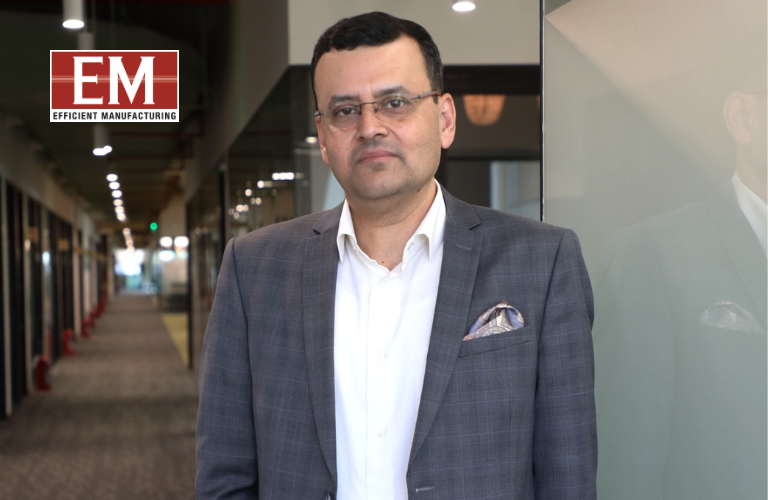| In conversation with Anushka Vani, Nathan Wenzler, Chief Security Strategist, Tenable, discussed the critical cyber threats, best practices for enhancing cybersecurity, challenges in adopting preventive measures, and the future of operational technology in India’s transportation and fleet management industries.
1. What are the primary cyber threats currently facing the transportation and fleet management industries in India?
India’s National Logistics Policy has led to increased digital transformation within the transportation and fleet management sectors. While the strengthening of logistics is critical to India’s growth, it also means that these sectors must become more reliant on technology. It expands the cyberattack surface, making them more vulnerable to attacks. These industries track and manage huge amounts of critical information required for the smooth movement of goods in and out of the country, including data on tracking shipments, vehicle and vessel management and business contracts. Any downtime can translate to heavy losses, and this presents an attractive proposition to cybercriminals seeking to disrupt operations or launch ransomware attacks for financial gain.
With the rising demand for mobility services in the country, organisations are adopting AI-powered fleet management solutions to scale operations. However, these software systems also provide cybercriminals with multiple attack points, presenting an attack vector that could disrupt fleet operations and result in the theft of sensitive customer and operator data. The move to hybrid cloud models further exposes organisations to cloud-related breaches, unauthorised access, and ransomware attacks. Cyberattacks on such critical industries have adverse consequences such as financial losses, legal repercussions, and long-lasting reputational damage.
2. What are some best practices that companies can adopt to enhance their cybersecurity posture?
Best practices for the industry all start with gaining full visibility into all devices in the IT and OT environments to ensure there are no security blindspots. This includes gathering real-time insights from vehicle telematics and GPS tracking, sensors, onboarding systems, integrated bridge systems, RFID tags, SCADA systems, and health and usage monitoring systems. Inventorying all devices ensures that they can be secured with modern security controls, which are crucial to minimising cyber risk to OT. Preventive security solutions such as exposure management offer real-time insights into the security posture of IT, OT, and IoT assets across the entire transportation and fleet management infrastructure, making it easier to minimise risk and improve security posture.
Nathan Wenzler, Chief Security Strategist, Tenable

3. What are the major challenges in the transportation sector that impede the adoption of preventive cybersecurity measures?
One of the major challenges in the transportation sector is securing legacy systems. Many legacy OT systems were designed for air-gapped environments and don’t have modern security features built in. With the lines between IT, OT, and IoT blurring, air-gapping no longer works, making these organisations more vulnerable to cyberattacks. Integrating security solutions with legacy OT systems is a complex proposition that could disrupt operations, and it’s probably why 55% of employees in the industry feel they are not well-equipped to identify or tackle a significant cyberattack. Most often, these organisations have limited visibility into their environments due to a lack of adequate security solutions and strategies. The diverse blend of OT systems and communication protocols causes blind spots, making it difficult to gain visibility into all assets, posing a significant security challenge.
4. What strategies can be employed to implement preventive security in OT systems without causing significant downtime or disruptions?
Preventive security is possible, but only if organisations have the right solutions that don’t cause disruptions to operations. Exposure management solutions are especially well-suited to help in these environments, as they can help organisations understand the current security state of their environment without making changes or interfering with the systems across the entire network. Armed with this kind of deep understanding of the environment, organisations are better equipped to make accurate and timely decisions about what security controls need to be in place to best protect against future cyberattacks. Exposure management solutions can also be integrated with existing legacy technologies, ensuring rapid response in the event of an attack. Such solutions offer access to data in real-time and across diverse systems, providing full visibility and context and ensuring better decision-making.
5. How does operational technology (OT) contribute to the efficiency, safety, and readiness of various transportation assets such as airports, long-and-short-haul transportation, military vehicles, ships, and aircraft?
Operational technologies are very important for controlling and monitoring physical processes and equipment in military installations, weapons systems, and critical infrastructure. In airports, OT systems play a major role in overseeing flight schedules, managing staff activities, passenger processing, baggage handling, cargo management and IoT devices that enable centralised control and management of all these systems. Increasing digitalization and adoption of new and emerging technologies in the transport and defence sectors have brought about significant efficiencies and capabilities, from remote control of unmanned systems to real-time data analytics for decision-making. This digital transformation, however, has also opened up OT systems to a range of cyber threats. Cyber adversaries, be it nation-state actors and state-sponsored groups, are actively seeking to exploit vulnerabilities in defence OT for espionage, sabotage, or to gain a strategic upper hand by disrupting operations.
6. Are there any emerging technologies or trends that you believe will significantly impact OT security in the coming years?
OT infrastructure is expected to move towards processing data at the edge, reducing latency, and enhancing real-time decision-making, especially with India’s 5G rollout. AI is transforming OT infrastructure by predicting maintenance needs, optimising processes, and enhancing efficiency. With India’s push towards a sustainable future and meeting net zero targets by 2070, OT infrastructure is expected to become greener, with industries focusing on energy efficiency and reducing the environmental impacts of their operations. Given these shifts in the market, the future of operational technology will possibly be agile, automated, and service-oriented, with cybersecurity at the heart of digital transformation. In order to unlock the full potential of converged IT, OT environments, and IoT environments, we expect to see a shift towards digital plant foundations that are built to address the existing gaps with a security-first mindset.
7. What advice would you give to industry leaders and policymakers to better prepare for and respond to cyber threats in the transportation and logistics sectors?
Critical infrastructure sectors like logistics and transportation cannot ignore the need for preventive security. While threat actors need only one initial attack vector to breach a network, organisations have to get security right before the attacks take place. It’s true that organisations cannot outrun cybercriminals, but it is equally beneficial to make it more difficult for threat actors to perpetrate attacks. Merely reacting to cyberattacks is no longer a viable option, making it important to adopt a preventive approach to cybersecurity. Preventive security is a stronger method of defense, enabling a greater level of deterrence by empowering organisations to scale security at the same pace and scope that attackers are increasing the level and intensity of their efforts.












